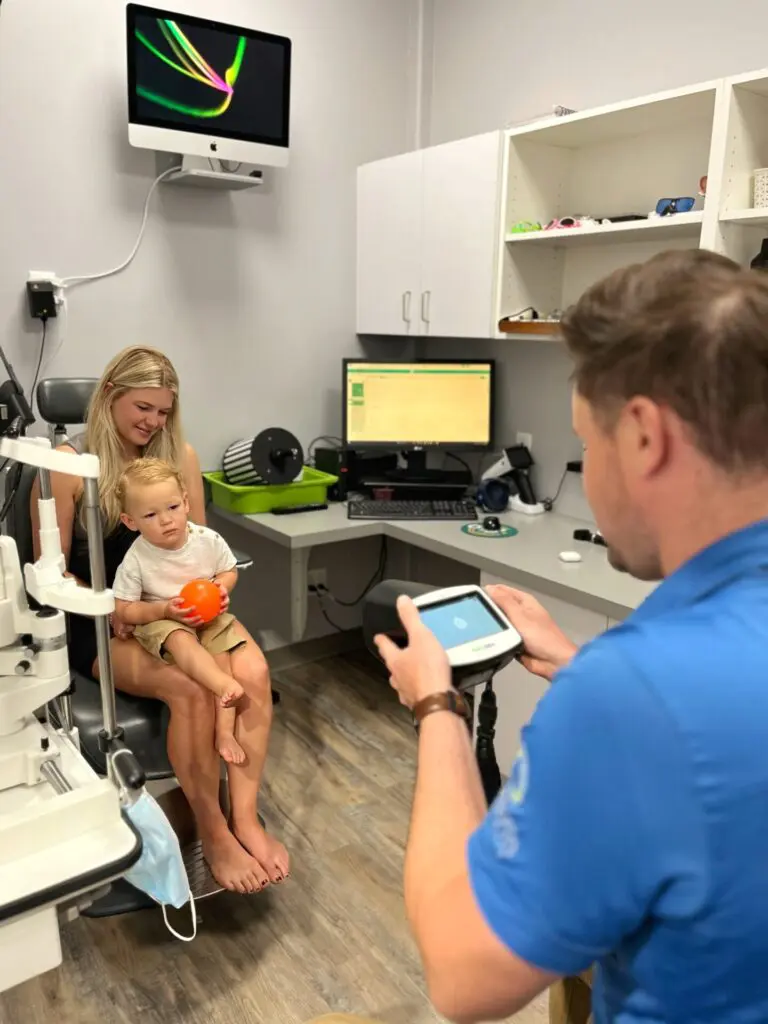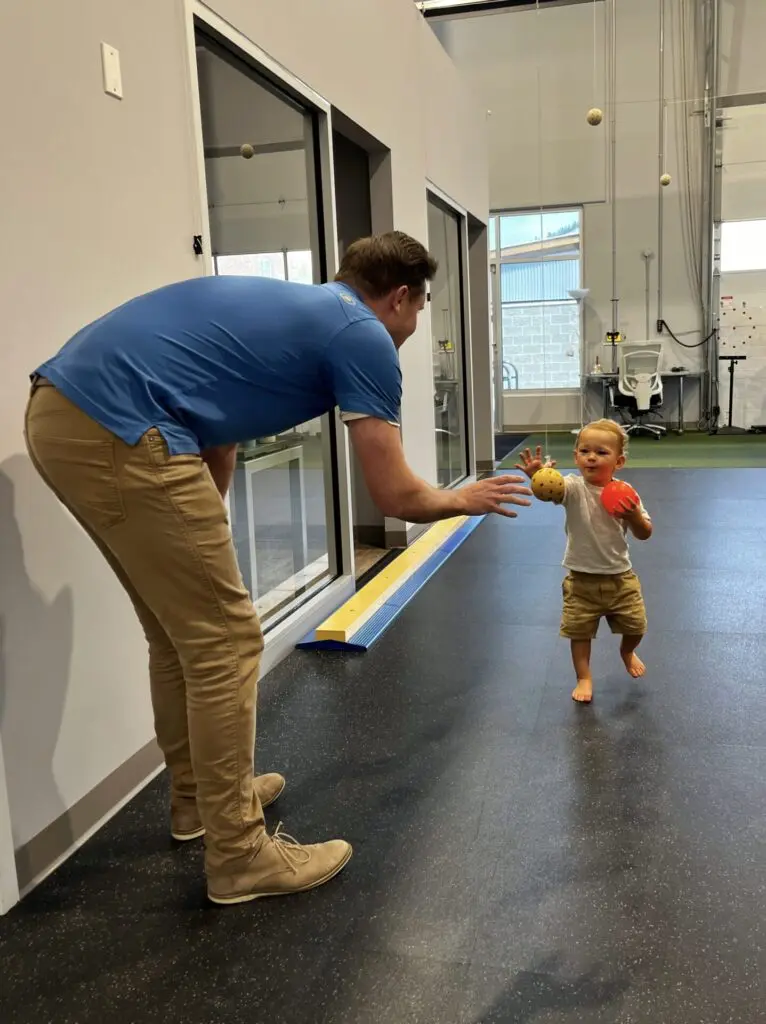Pediatric Optometry & Children’s Eye Exams
For many parents, the idea of having an eye exam for your infant may sound a little daunting. Which is clearer – one, or two? Not exactly a question a babbling baby would be equipped to answer. Fortunately for optometrists, technology exists that allows us…

For many parents, the idea of having an eye exam for your infant may sound a little daunting. Which is clearer – one, or two? Not exactly a question a babbling baby would be equipped to answer. Fortunately for optometrists, technology exists that allows us to objectively assess a little one’s visual development with minimal input and maximal fun.
Spot Screener
A spot screener is a tool that, with the click of a button, allows us to determine with strong accuracy whether a child’s eyes are developing properly. If your child can view a light, they can have their eyes examined! Using advanced optics, we can determine within a matter of seconds whether your child’s eyes are aligned and whether they are nearsighted, farsighted, or have astigmatism. For most children, a moderate prescription is normal and does not require glasses to correct. If higher than expected however, early intervention is critical to ensure that gross motor skill, fine motor skill and visual clarity develops properly. I personally can understand the trepidation of some parents at the thought of their youngster wearing glasses. The truth however, is that if you don’t correct certain prescriptions at a young age, visual clarity will never properly develop. Your child’s future self will thank you for getting on things early!

Retinoscopy
While technology can most certainly help to guide assessment of a youngster, there’s often nothing better than the tried and true technique of retinoscopy. Retinoscopy is a technique whereby a light is shone in the patient’s eyes and the response to lenses presented in front of the eyes is objectively observed and assessed. While initially challenging to master, retinoscopy is often considered one of the most accurate and dynamic ways to assess whether a glasses prescription would benefit a young child. Best of all, it requires zero verbal responses, making it ideally suited for kiddos.
Motor Skill and Movement
When vision develops and functions properly, it leads. When it does not, it interferes. Much of our pediatric visual assessments rely on observing a child as they navigate the world. Not many toddlers love to sit still, so why would we ask them to during an eye exam! The benefit of a play based examination is that it allows us to gauge how vision is leading motor movement – and consider appropriate management and referral as indicated.

Ocular Health
The story we’ve told as optometrists for quite some is that the primary purpose of an eye exam is to provide glasses. While this is most certainly an important consideration, what is equally important is whether any concerning health considerations present. The eye is the only part of the body whereone can directly visualize blood vessels without a scalpel – and with ocular imaging advancing by the year, the eyes are truly the window to overall systemic health. Children often cannot meaningfully express blur or “visual distortion,” and there unfortunately exist a number of nasty visual conditions that require absolute immediate attention to avoid devastating outcomes. Ocular health assessment of a child is often rather simple with the imaging tools available to us today – zero pain for maximal peace of mind.
Amblyopia (“lazy eye”)
It has been estimated that 60% of parents believe they’d be able to tell if their child was struggling with their vision. As a parent of 3 kids, I can tell you honestly that in most instances you would have zero indication that an issue was present. Assessment of a child’s vision beginning at 6 months is critical if you hope to catch and intervene in the most meaningful way – particularly if one eye is far clearer than the other, as is the case with amblyopia (“lazy eye”). I’ve taken my kids to have their teeth counted and cleaned as young toddlers – how they see and process the world is at least as important! Starting young is also an important habit to instill prior to the school years, as classroom learning has been estimated to be at least 70% visual.
While taking your child for an eye examination may seem daunting, I promise you they’ll love the process – and if an issue is in fact detected, their future self will thank you for getting on it early.
Until next month,
Paul Rollett, OD, FCOVD


